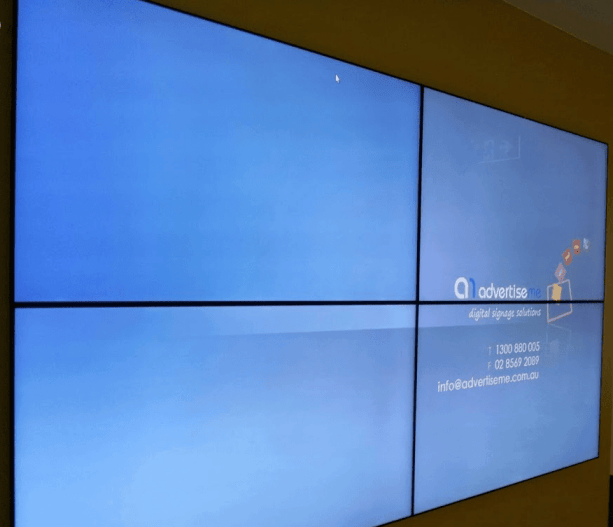In the early years of the 1980’s, the public existence of the Digital Signage Video Walls surfaced. Because it was something new and the technology back then was not as advanced as it is today, it needed improvements to its core problems:
1) The monitors were CRTs which meant that the thickness of the gap between the screens was very noticeable – the diagonal display it had was approx twenty-eight inches.
2) They planned to split one image into different sections. For example, arranging four by four monitors or sixteen monitors that show pieces of a single image, so much as they wanted to, it could not be done. The technology was not capable of doing it.
This problem was solved with the introductions of Laser Discs. It does this by the use of computers to process the entire image and then split the signals accordingly. The only companies that provided this, were Philips and Delcom, and since there was more demand than supply, they priced their products well. Though high-priced as it was, laser disc technology helped solve this problem of the video wall, which later brought so much improvements over the years.
The method starts with many laser discs each encoded in them an individual image in completing the picture prepared by a production team. Each monitor is connected to a laser disc player and the laser discs that contain parts of the complete image; like pieces of a jigsaw puzzle. A production house is in charge of synchronizing all laser disc players to make sure they run smoothly. It was very effective, although not enough to satisfy what the clients demand, which was to get the video wall running in real time.
As the 1980’s were coming to a close, Philips was one of the companies that released memory devices called CCD. These devices had a lower cost, which made buying video walls very possible. Video wall processors were released that time by Electrosonic as well as Synelec; these processors were allowed to be programmed making users manipulate the video walls to their liking. Then Pioneer, Electrosonic, Sony, Toshiba, Electrohome and Barco all came up with the video wall cube, which is a series of CRT projectors enclosed in a screen. The gap problems were finally solved and helped brighten the screen more, the materials were also changed to give more contrast to the picture making the Digital Signage Video Wall a big success in the market. The video wall cube concept is still used until now, but is only built with advanced LCD display to give the picture a better crispness and clarity to its color, animation and letters.
In the 1990’s the video processing of the picture was improved through the simultaneous use of computer graphics cards. The image-split concept of the 1980’s may have been decent enough but where it was possible to upgrade, it was not worth stopping there. Programs and innovated video processors were now created to fulfill the further advancements of the video wall.
Today, manufacturers like Samsung has introduced specialised screens to make the setup of Video Walls simple and easy. Their built in software allows you to configure large video walls by interconnecting screens with a Display Port cable. Here’s an example of a solution we recently installed. We will shortly include more about this project in another post.

There you have it, a short history about Video Walls. Hopefully the information contained in this post is correct, if not please contact us.